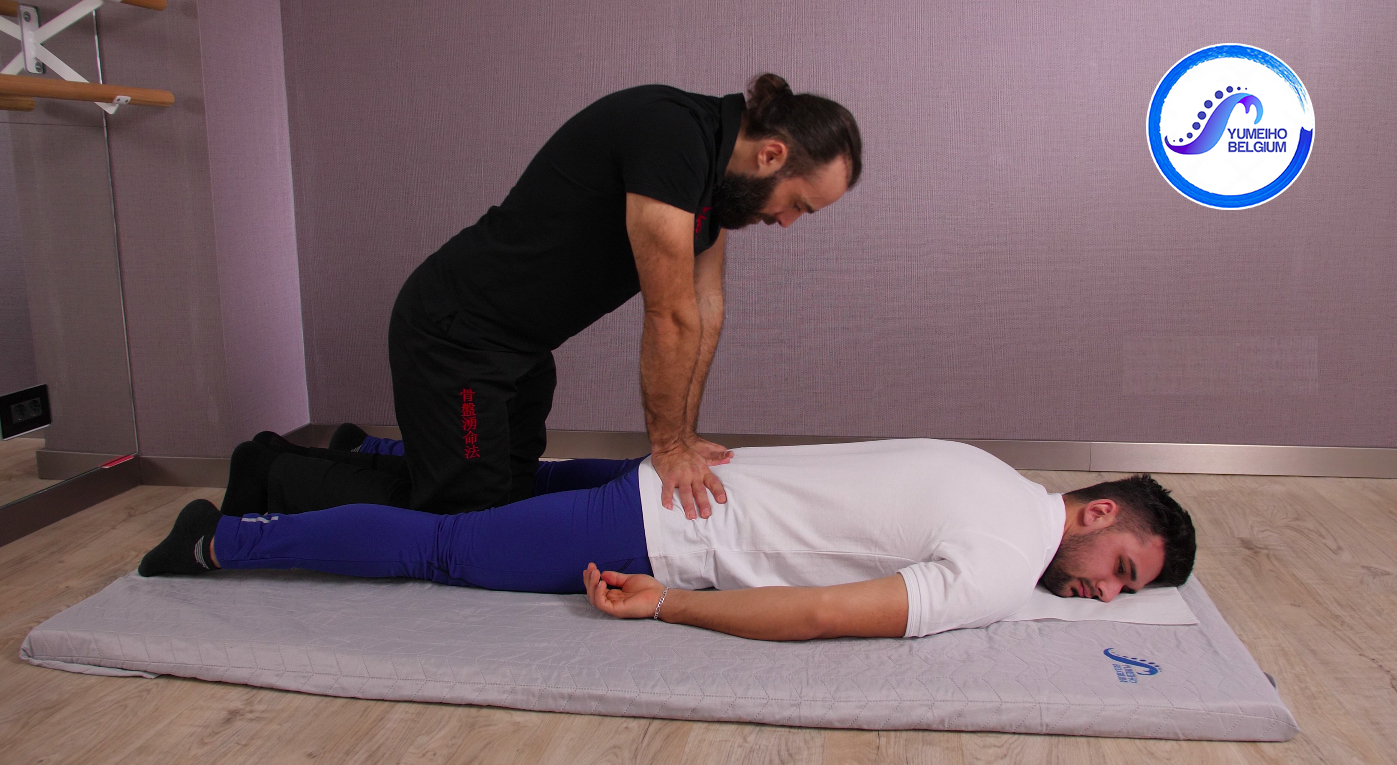Yumeiho therapy for a correct posture
The usefulness of applying manual therapies and specially the Yumeiho therapy in cases of muscle, joint or back pain has been demonstrated by numerous effective studies at many famous universities around the world.
We present in the following some examples:
– The Australian Physiotherapy Association conducted a study that proved the effectiveness of manual therapy on cases of chronic back pain. The obtained results show the usefulness of using manual therapy;
– The University of Queensland conducted another study led by Julie Hides that showed the effectiveness of strengthening the stabilizing muscles of the back through manual therapy techniques for cricketers.
– David Abraham, a sports medicine specialist in New South Wales, Australia, conducted a study to demonstrate the incidence of risk factors for endurance sports. Over 70% of them reported pain in different segments of the body.
– Also a study published in Physical Therapy in Sport, and conducted by Brian J. Hemmings, proves the beneficial effects of therapeutic massage in terms of physiological, psychological and performance for elite athletes but the results are valid for the rest of the population.
Regarding Yumeiho therapy, there are international studies, also carried out by famous universities, which prove the usefulness of the application to combat postural problems, back pain or to improve the quality of life.
– A study by the Faculty of Physical Therapy in Zagreb, Croatia, highlights the effectiveness of Yumeiho therapy in chronic nonspecific back pain.
By nonspecific pain we mean that pain that has no pathological cause.
– The University of Tehran conducted a study in 2017 on “Yumeiho’s efficiency in improving the amplitude of trunk movement and functional strength in volleyball athletes with hyperlordosis.” The results show a significant improvement in physical condition and other anatomical-functional parapeters for the group that benefited from Yumeiho compared to the control group. The final conclusion was an expected one: “recommending the application of Yumeiho therapy for postural problems”.
Of the many working methods dedicated to static and dynamic disorders of the musculoskeletal system, Yumeiho is the only manual therapy that bases its theory and practice on the study of the relationship between the dominant position of the body’s center of gravity and the potential for disease. This is because the center of gravity of the human body is correlated with verticality and balance, essential elements of our healthy life.
The vertical position is of course ensured by the axis of the spine. The ability of the spine to keep us upright and in balance is dependent on the functional state of the muscles that stabilize it, the state of the joints between the vertebrae and adjacent soft tissues, and last but not least the state of the structures on which it rests. As we know, the base of the spine rests on the pelvis, which is further supported by the lower limbs.
It should also be noted that the correct vertical position requires the weight distribution of the whole body at the level of the soles, and to achieve vertical static balance the projection of the center of gravity of the body must be located within the perimeter delimited by the soles.
Yumeiho therapy is a complex of manual therapeutic procedures and complex physical exercises, in order to rehabilitate the balance, symmetry, and functionality of the human body.
Manual procedures, applied for prophylactic or corrective purposes in Yumeiho therapy consist of: osteo-articular manipulations; passive gymnastics elements; point therapy procedures (similar to acupressure and reflexology); special massage techniques and procedures; stretching elements (stretching, elongations performed for curative or prophylactic purposes);
Measurements performed with computerized measuring instruments (“smart” scales) in numerous studies over time have shown that when measuring left-to-right body weight, weight distribution in the lower limbs, is not obtained. identical or approximately identical values than in only about 1% of cases.
Differences that have been found may have one or more of the following causes:
– asymmetries of the lower limbs in length, volume, tone;
– position asymmetries of the pelvic bones;
– position asymmetries of the coxo-femoral joints (and / or their functional disorders);
– functional asymmetries (tone, elasticity, etc.) of the hip muscles.
– static and dynamic disorders of the intervertebral joints. These may be the consequence of the above-mentioned disorders or may precede them (in some cases they may even cause them);
The asymmetries that are observed in the human body are closely related to the condition of the spine, this being the basic principle of therapy.
Yumeiho is a therapeutic massage designed as a method of restoring the correct position of the spine, as well as correcting disorders induced by dysfunctions and / or its pathology.
We can conclude that in order to maintain the center of gravity of the body in a relatively stable, balanced, efficient position, the entire functional assembly of the musculoskeletal system must be in good working order. We refer here to the lower limbs, the pelvic girdle and last but not least the spine. It is very important that the muscles that maintain the vertical position act symmetrically, harmoniously without pain or muscle blockages.
Applying Yumeiho therapy does not try to “cure” patients. Instead, the unique approach and especially the complexity of the technique proved to be very effective in relieving symptoms, in improving the parameters of static and dynamic, allowing the beneficiary to carry out his activity, whatever it may be, to its full potential.

